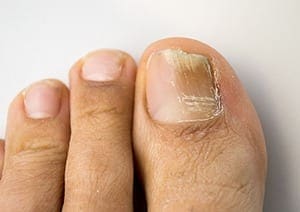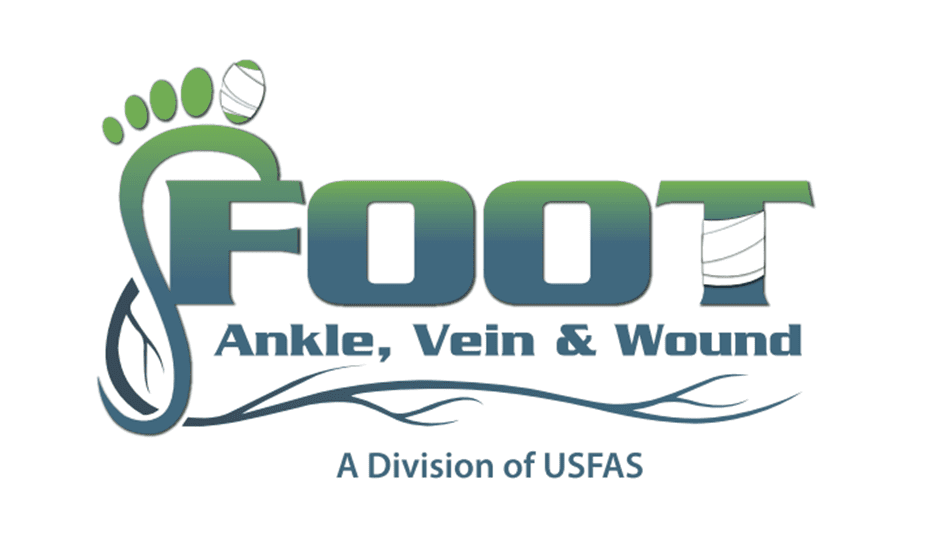
The yellowish, thickened, crumbly sight of a toenail afflicted by a fungal infection is a source of discomfort, angst, and embarrassment for many. While it may start as a small yellowish spot at the tip of a nail, fungal infections can spread quickly across the entire toenail, and even from toe to toe (or person to person). Severe cases can cause substantial raggedness and disfigurement of the nail, and sometimes even pain or odor.
Causes of Fungal Toenails
Nail fungus is caused by dermatophyte fungi—the same class of micro-organisms that cause conditions like ringworm and athlete’s foot. In fact, an existing case of athlete’s foot can easily spread to the nails, causing this condition, too.
The fungi access the underside of the nail through a small separation between the skin and the nail plate, an ingrown toenail, or through tiny cuts you may not even be able to feel or see. Once inside, they spread and expand, feasting on a protein called keratin which is abundant in skin and nail tissue.
Fungi like environments that are warm and wet. Public facilities such as locker rooms, gyms, showers, and pools are prime real estate for them, which is why you should always protect your feet with, at a minimum, shower shoes or sandals when in public. They’re also attracted to damp shoes and socks, which is why you should always change them out whenever they get sweaty—more than once per day if necessary.
There does appear to be a hereditary component. Even if you’re “living right” and practicing good hygiene and prevention tips, you’re still more likely to develop fungal toenails if there is a family history of the condition.
Treating Fungal Toenails
There are three basic, non-mutually-exclusive treatment options for fungal toenails: topical medications, oral medications, and laser. Your specific treatment course could include any or all of these options. Because the infection is so stubborn, we’ve found that using all three of them together in combination tends to produce the best results.
Topical Medications
Antifungal creams are typically included as a part of any treatment plan. All on their own, topical medications usually aren’t strong enough to eliminate fungal toenails, but they do increase the success rate when combined with other techniques. We may also recommend that you use an antifungal powder in your shoes during and even after your treatment course.
Oral Medications
Prescription antifungal pills have been, traditionally, the most common primary treatment course for fungal toenail infections, since they don’t have to permeate the nail barrier to reach their target. A normal treatment course might range from 6 to 12 weeks.
Oral medications are known to cause some side effects, including skin rashes and possible liver damage. They may not be recommended for patients with a history of liver trouble or congestive heart failure, and you may need occasional blood tests to check on how your system is adjusting to the medication.
Laser Therapy
State-of-the-art laser therapy is now the most advanced and effective treatment available for fungal toenails, providing a higher success rate than oral medications while offering fewer risks. In fact, apart from a warming sensation, there should be limited discomfort during the procedure, and there are no known side effects. The technology uses a refined beam of light tailored to a highly specific wavelength. This allows it to pass through the nail and target the fungus underneath, all without damaging the surrounding skin and tissue.
Sessions tend to be quite brief. If you only need one or two toes treated, you might be in and out within minutes. Longer sessions where all 10 toes need work could take up to an hour. The treatment course includes 3 sessions—one per month—with the possibility of a follow-up session 6 or 12 months later as necessary.
How Long Until I See Results?
Unfortunately, it will take time—usually several months to over a year—for you to see the full results of treatment. Toenails grow slowly, and even once the fungus causing the disfigurement is gone, you still have to wait for new, clear, healthy nail tissue to replace the portion that has been damaged. That said, many patients do notice substantial clearing of the nail even after a single laser treatment, even though full results will take much longer.
While that may seem like a long time, the truth is that, if you don’t seek treatment, the problem will go on for years or decades—it’s not like the fungi are going to be running out of keratin anytime soon. So while treatment does require a bit of an investment of time and effort, it’s almost certainly preferable to living with embarrassing, unsightly toenails for the rest of your life!
To schedule an appointment and get started on your journey to clear, healthy, happy nails, call Foot & Ankle Clinic of the Virginias today at (800) 456-8637. We have many convenient offices located in Virginia and West Virginia to serve you.

